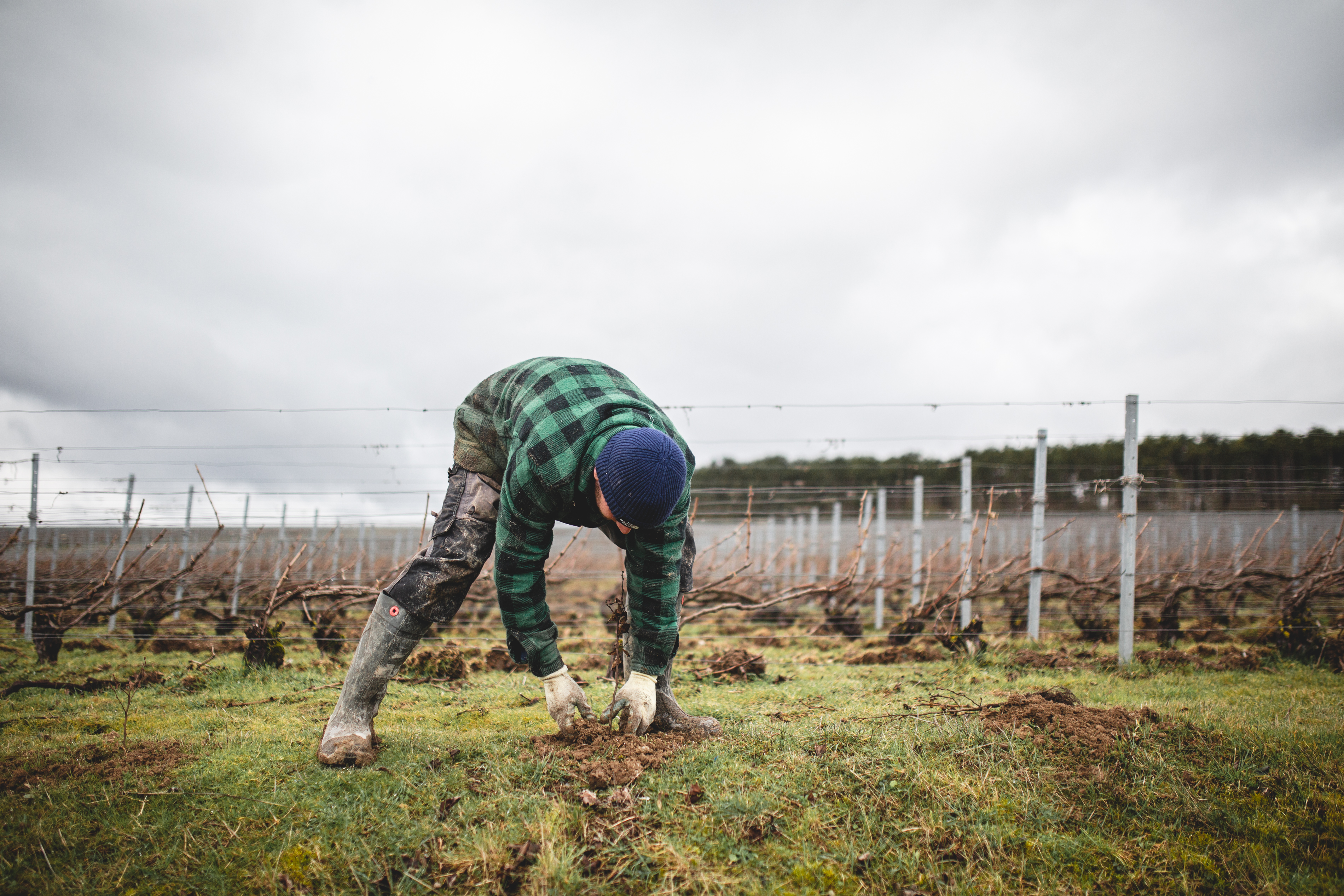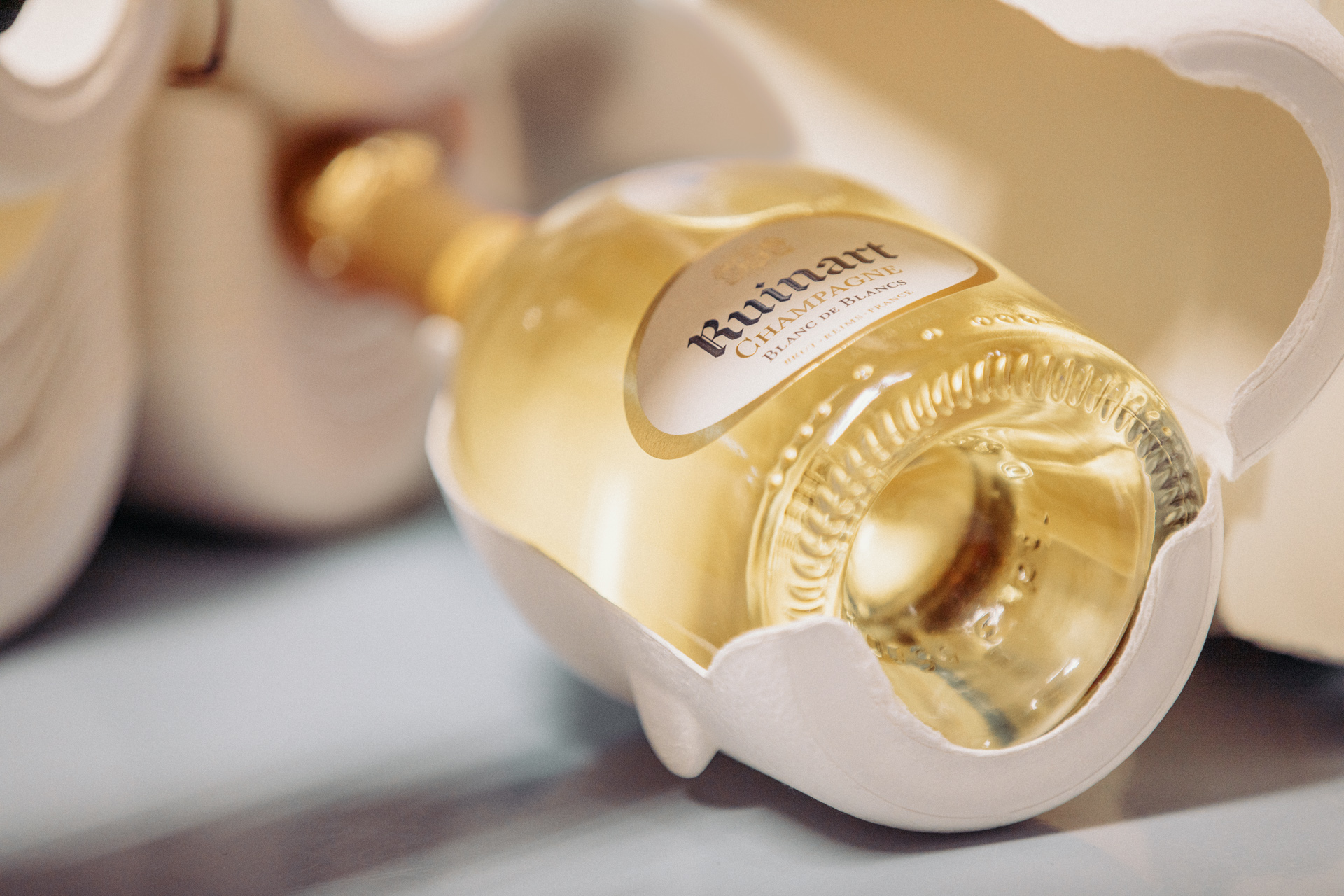
LVMH
LVMH is the world leader in luxury.
At Ruinart, sustainable development is a source of creative inspiration

When it comes to protecting our biodiversity, Moët Hennessy, our Wines & Spirits division, is always ready for innovation. Sustainable development is not only an imperative, but also a source of creative inspiration for Ruinart, as Amélie Saunier, International Head of Marketing at Ruinart, points out. From harvest to distribution, Ruinart is driven by a quest of perfection while preserving our nature. We asked Amélie to tell us more about the impact of sustainability in savoir-faire, creation and design.
For Maison Ruinart, the countdown has already started
Since its foundation in 1729, Ruinart has been a symbol of French art de vivre. The Maison has crafted its exceptional wines by nurturing the roots of the terroir and ancestral savoir-faire. In the vineyards located in the Montagne de Reims, the cellar masters have witnessed the impact of climate change. In 1961, the first day of harvest was October 6. In 2020, the first day of harvest was August 17. As Amélie says:” Global warming is a terrible reality and changes the way we choose our grapes and elaborate our champagne.” Over the past 30 years, we have gained 1.1°C. One of the major challenges in the coming decades will be to mitigate and adapt to climate change.
Grapes, sustainable production and transport
In order to harvest perfect grapes, Ruinart has been deepening its commitment to preserving the soils that are a source of life. The preservation of our biodiversity is one of the top priorities. Insects and natural plants are the sentinels of a fragile balance. This year, Ruinart announced that the Maison is dedicating the entire 40 hectares of the historic Taissy vineyard to a biodiversity pilot project carried out with Reforest’Action. The initiative distinguishes itself by its size and global approach. It attests to the drive to develop this approach in the years to come and to share it more widely on the scale of the Champagne region.
Faithful to its pioneering spirit, Ruinart also promotes sustainable energy, like choosing LED lighting in its cellars. And in terms of commercial transport, 85% of deliveries are made by sea and 15% by road – not by plane.

The Second Skin case: an example of conscious packaging innovation
One of the first reason to buy champagne is to make a gift, so packaging is truly important. Since 2015, gift boxes have been eco-conceived but Ruinart has pushed its limits by challenging its design and development teams to create the Second skin case. “2 years of research and development were needed to create this sustainable packaging in every aspect, from bottle shape to wine protection” reminds Amélie. This 100% recyclable paper case reduces the bottle’s packaging carbon footprint by 60%. Its white color and texture are inspired by the Maison’s historical Crayères, the chalk quarries that store Ruinart Cuvées in optimal conditions. Maison Ruinart rethinks the purpose of functional luxury: to preserve and enhance the product experience. The Second skin packaging is the result of continuous effort to combine aesthetics, authenticity and sustainability while protecting the wine from light and preserving the taste of Ruinart’s Blanc de Blancs.
Maison Ruinart strives to create a more sustainable French art de vivre and conscious luxury at all levels.
If you wish to discover more about our Maisons' commitments and how at LVMH we craft the future of luxury, sign up to the INSIDE LVMH Platform - your new digital meet-up with LVMH.
#LVMH #INSIDELVMH
